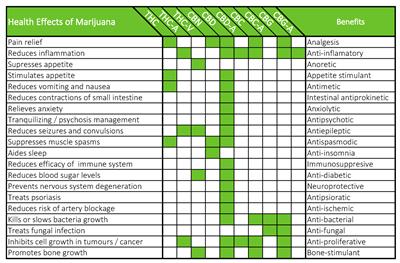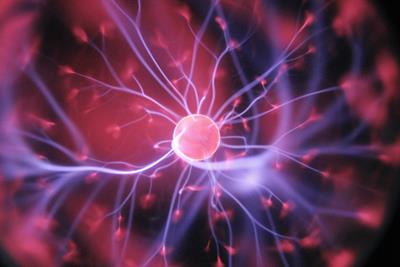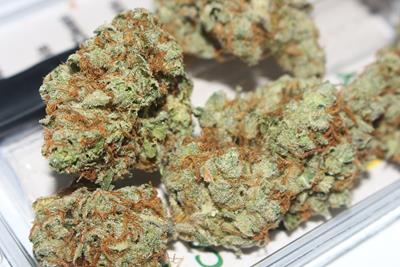
Tuesday February 11, 2020
 Health/Science
Health/Science
Cannabinoids are the chemical compounds from the cannabis plant (and our own bodies!) that make us feel “high” or at least psychoactive to some degree. But cannabinoids would not have an effect at all if it weren’t for their interaction with the human endocannabinoid system. All mammals have an endocannabinoid system as an evolutionary means of survival despite the sometimes-harsh environments. The endocannabinoid system serves as a vital mechanism through which all cells communicate to elicit some pretty powerful effects.
What is the Endocannabinoid System?
The endocannabinoid system is comprised of a series of receptors located throughout the brain and body. There are two primary types of receptors, CB1 receptors, which are located in the brain and spinal cord, and CB2 receptors which are located throughout peripheral tissue like the stomach and skin.
Cannabinoid receptors were first discovered in the brain in 1988 which aided in the development of Marinol, a synthetic form of THC used to treat nausea. With Marinol, researchers were able to map an abundance of receptors in the brain which prompted the question: “why are there unique receptors in the brain for plant-derived chemicals?”

It wasn’t until 1992 that researchers discovered anandamide, a cannabinoid produced inside of the body. A second “endocannabinoid” (internally-produced), 2-AG, was discovered a few years later. By watching the interaction of these endocannabinoids with endocannabinoid receptors, researchers discovered something amazing.
These receptors, which were more plentiful than any other neurotransmitter receptor in the body, help regulate our general well-being by facilitating communication between different cell types. In this way, cannabinoids help regulate mood, pain, inflammation, stress, and yes, even cancer cell apoptosis in some cases.
How Different Cannabinoids Interact with the Endocannabinoid System
Cannabinoids are an interesting bunch of neurotransmitters because they work backwards through the synaptic gap. Unlike other neurotransmitters (dopamine, serotonin, adrenalin, etc.) that send electrical signals forward to elicit the action of other neurons, cannabinoids travel backward – retrograde neurotransmission – to help determine if the initial neuron will send a signal at all. This helps explain why certain cannabinoids are so good at relieving pain, anxiety and inflammation (your body won’t react to stressors if it’s not told to).
But cannabinoids don’t all interact with CB receptors in the same way. Some reduce pain, others stimulate appetite, and others stop bacterial and fungal growth all by helping determine which neurons fire their messages (either positive or negative) in the first place.
And then there’s CBD. This cannabinoid works not by binding to presynaptic receptors but rather by blocking them to a degree. Their shape is slightly different than other cannabinoids, allowing them to bind partially to cannabinoid receptors. This helps them determine which cannabinoids can activate presynaptic neurons in the first place. Think of them as the hall monitors of the endocannabinoid system, dutifully standing their posts to see that everyone gets where they are going without letting any troublemakers get in the way. This not only explains how CBD can help tame a marijuana high, but also explains why its list of potentially therapeutic benefits is so extensive.
Cannabinoid Deficiency
Believe it or not, cannabinoids are an essential part of our overall health. When endocannabinoids are lacking, they can lead to a number of complications including chronic anxiety, migraines, gastrointestinal problems and more.
In 2001 (and again in 2016) Dr. Ethan Russo proposed a theory on endocannabinoid deficiency after noting an anandamide deficit in people suffering from chronic migraines. Anandamide is one of the most prominent endocannabinoids in the body and is responsible for regulating things like appetite, mood, motivation and pain. It therefore stands to reason that an anandamide deficiency would have a negative effect on these areas, and that cannabinoid supplementation could help rectify the problem.

Interestingly, CBD helps increase natural anandamide production thanks to its amazing ability to regulate the rate at which cannabinoids get produced and absorbed. By slowing anandamide degradation, CBD can help maintain healthy levels of the endocannabinoid thus potentially improving things like anxiety, pain, and a whole myriad of other illnesses and discomforts.
Cannabis can do amazing things all thanks to its profound impact on the endocannabinoid system. By stimulating the endocannabinoid system, people can live happier, healthier lives naturally. When people have endocannabinoid deficiencies, cannabinoid supplements like CBD tinctures or even a little puff on a marijuana bowl can do wonders.
Photo Credit: Hal Gatewood (license)







